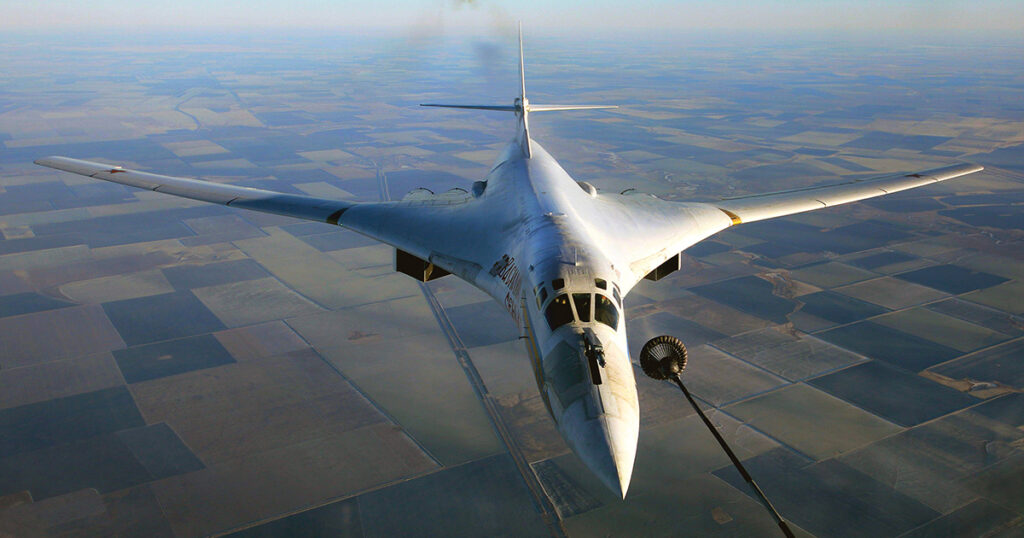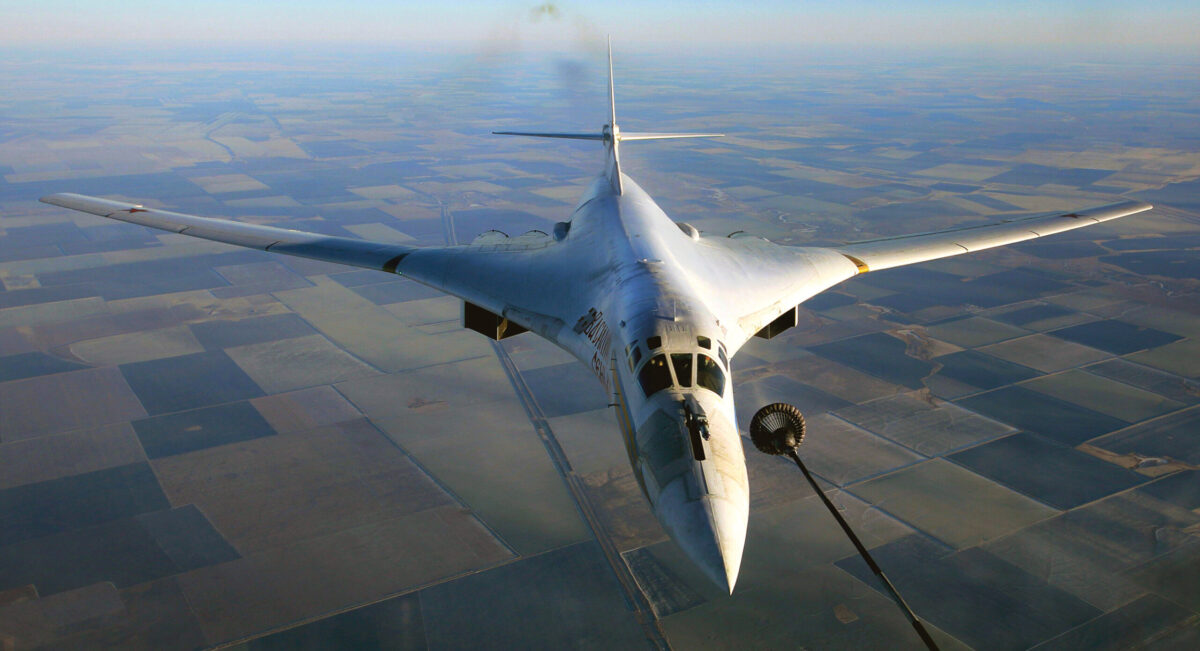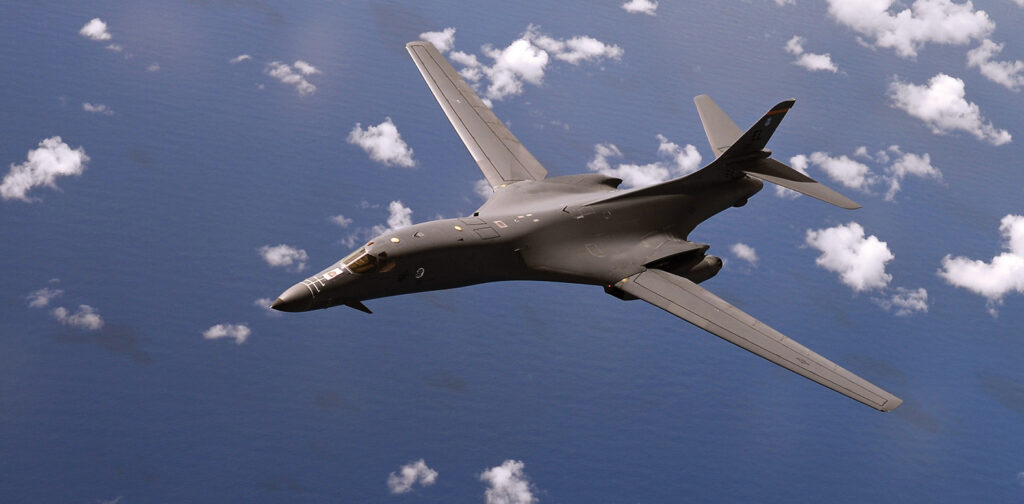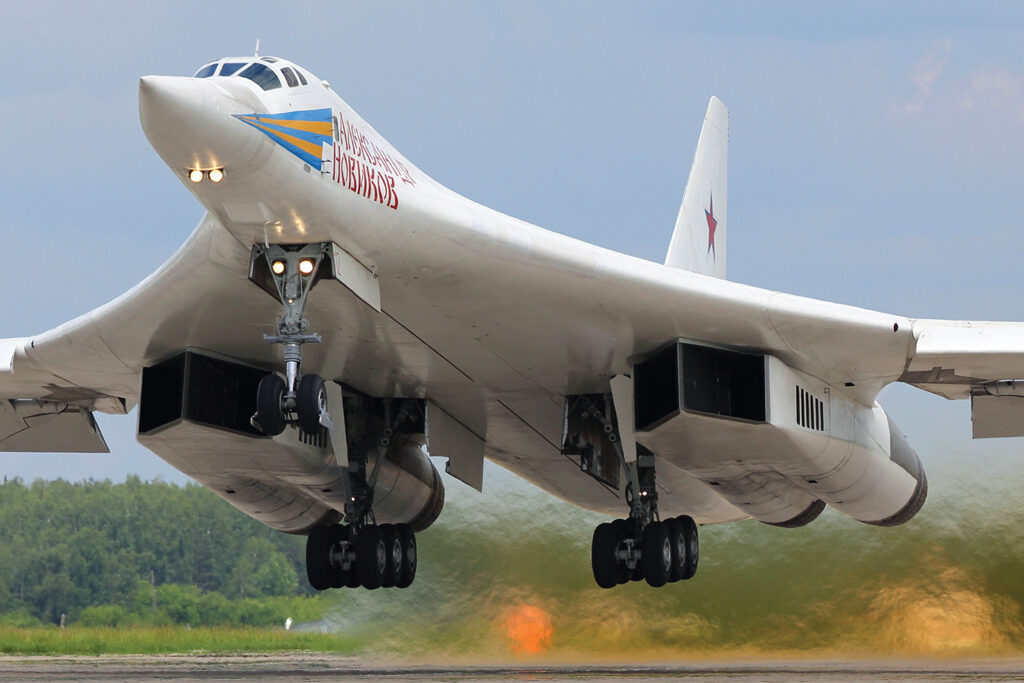

The Cold War was at its coldest in the 1960s, with the United States and the Soviet Union each engaged in massive military buildups to prepare for possible war with the other. Both superpowers wanted to develop production aircraft that had the potential to deliver advanced weapons systems to the enemy. Among many projects, the Soviets wanted to build a new strategic intercontinental bomber capable of supersonic speeds. This interest was, at least in part, due to the awareness that the United States was developing a successor to the Boeing B-52 bomber—the Rockwell B-1 Lancer—that would eventually fill this same role. The Soviets were also alarmed by the United States’ development of the hypersonic North American XB-70 Valkyrie prototype bomber, which first flew in 1964.
Multiple design bureaus submitted proposals for the new Soviet bomber. Some of them looked very similar to the XB-70. Ultimately, the Tupolev design bureau received the assignment to create the new aircraft, which would become Tu-160, known in the West as the Blackjack. Early in the development process, Tupolev realized that wings with variable geometry (swing-wings) would be ideal, and that those wings should be blended into the airframe at their roots. The swing-wings would allow the Tu-160 to maximize its lift/drag ratio during all aspects of its mission, from takeoff, to climb and attack and back to landing. The design of the tail posed significant technical challenges given how thin it needed to be for such a high-speed aircraft. Ultimately Tupolev decided on a cruciform tail with a divided rudder. The aircraft was powered by four Kuznetsov NK-32 turbofan jet engines, each of which could produce 55,000 pounds of thrust in afterburner mode.

In its final form, the Tu-160 looked strikingly similar to the B-1, but the two aircraft have significant differences. Although both have a crew of four, the Tu-160 is much larger, with more than double the wing area and almost twice the thrust of its American counterpart. The Tu-160 has a top speed of just over Mach 2 (similar to that of the original B-1A) while current B-1B models top out at Mach 1.25. The Tu-160 also has a higher rate of climb than the B-1. Critically, the Tu-160’s armament was limited to either twelve Raduga KH-15 or six KH-55 nuclear-capable cruise missiles in each of two internal bays, both on rotating launchers. The B-1, in contrast, has three internal bomb bays and six hardpoints on the wings to allow it to carry a wide array of conventional and nuclear armaments as well as air-launched missiles.
Neither aircraft have stealth capabilities, technology that didn’t exist at the time of their design. Although both aircraft started out with analog instruments, the B-1 has since been updated to a glass cockpit. While many B-1s and almost all Tu-160s were originally painted white (to protect against the flash of a nuclear blast), modern B-1s have a dark blue or dark gray color scheme. It should be noted that the current B-1B functions as a low-level penetrator, which is a different role than that for which the Tu-160 was designed. Overall, the Tu-160 is a faster aircraft with an extended range, but the B-1 is more maneuverable and harder to spot on radar.
Of note, the Soviets did significant work to make the Tu-160 capable as a platform for air-launching space vehicles to put satellites into orbit, via a system known as Burlak. The idea was that the airplane could be flown to an air base in a country that had requested the service, and there a satellite of up to 850 kilograms could be fitted to a three-stage, liquid propellant launch vehicle. The mating of the rocket to the airplane would be done within the host nation’s borders to avoid the prying eyes of foreign governments. The Tu-160 could then air-launch the combined payload/rocket from altitude into any orbit desired. Despite some interest, the Burlak system appears to have been abandoned before it was ever used. Plans to use the Tu-160 as a launch platform for an aerial drone known as Voron also fell flat.

The Tu-160 formally entered active service in 1987. Before the initial round of production stopped in the 1990s, a total of 37 Tu-160s had been completed, with nine of them serving as test models and the rest as operational aircraft. Critically, when the Soviet Union collapsed in 1991, 19 Tu-160s (and their nuclear armament) became the property of the newly independent nation of Ukraine. While some of the aircraft were repainted in Ukrainian livery, their new owners had little use for them. The Tu-160s were extremely expensive to operate and maintain and the planes sat largely unused at Ukrainian military airfields.
Russia soon found itself in the uncomfortable position of having to buy back its Tu-160s from Ukraine. Extensive negotiations ensued, mostly focusing on price, and by 1999 Ukraine finally agreed to sell back eight Tu-160s to Russia (along with their attendant nuclear-tipped cruise missiles) in exchange for debt relief. The Russians selected the eight aircraft they felt were in the best condition to return to their fleet. Of the remaining eleven Tu-160s in Ukraine, ten were scrapped (including at least one in a public demonstration) as part of the START II disarmament treaty. One Tu-160 was kept as a museum piece.
Interestingly, during the time when the Russians were negotiating to buy back their Tu-160s, there was a brief period where it appeared that three of the aircraft would be sold to an American company, Platforms International Corp., which wanted to use them for a private air-launched satellite venture. The Russians were outraged (and terrified) at the possibility of the planes being transferred to the West and pointed out that such a purchase would itself be a violation of START II. The deal subsequently collapsed.
The Tu-160 has only seen relatively limited operational use over its lifetime. Mostly used for patrols and as part of military exercises, several aircraft were briefly deployed to Venezuela in 2008 and again in 2013 as part of a show of force, and the planes first saw true combat in 2015 during the Syrian civil war. The aircraft have only been used in a very limited manner in the Russian invasion of Ukraine. Recently, some Tu-160s have undergone extensive upgrades and modernization, and a small number of new, upgraded aircraft (so-called Tu-160M models) are being produced again after many years. A living relic of the Cold War, the Tu-160 remains one of the most striking and remarkable bombers ever to roll off an assembly line.